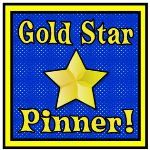Today we are going to talk about critiquing art. We are also going to learn about a famous great artist named John Audubon. We are going to apply our newly found critiquing skills to one of his famous bird pictures. Then, we will embark on a fun activity!
What does it mean to critique art? Well, it means to determine the value of the art. How do you determine the value? Well, there are different steps an art critic takes to determine the value of art. For this lesson, you are the art critic!
Art Vocabulary
Here are some new art terms I will use within this lesson:
Balance- the arrangement of elements in an artwork
Contrast- the use of different colors, values, textures, and other elements to create differences between those elements
Focal point- the main point to which one's eye is attracted
Negative space- the area, space, or background around an object
Perspective- representation of a sense of distance and depth in an artwork through use of line and other elements
Element- a visual or sensory part of an artwork used to create the composition
Before we begin, let's discuss what "critiquing art" means.
Art Critique1.)
Beauty- Is the art beautiful to you? Do you like it? Does it have balance, contrast, texture, movement, appropriate size of subject, and is the presentation (framing) pleasing to your eye?
How about a focal point? Is the negative space used properly? Is the perspective appropriate?
Are the different elements placed properly?
2.)
Skill/Technique- Is the piece done well? This may be hard for you to determine now, but look closely at the picture. Are the strokes done consistently? Is there depth and detail?
3.)
Meaning- Is there meaning behind the art? Art can represent another object, tell a story, make a statement, or become an allegory or metaphor.
4.)
Unique- Is this art unique? Does it invite you to look longer? Is it special?
5.)
Complete- Does the art piece tell the story the artist wanted to tell? Did it work?
John AudubonNow that you know what an art critic thinks about, let's discuss our great artist named John Audubon. He lived from 1785-1851, and he is one of the most famous painters of birds in the whole world. Although he grew up in France, he moved to America when he was 17 years old. Because he loved beautiful birds, he traveled all over North America, painting 435 watercolors of birds. His life's work was painting every bird species in America! Isn't that amazing? His pictures are famous and bird watchers still use his work to identify birds on the trail.
Art Critique PhotoHere the picture we will use for this lesson:

American Robin by John Audubon (1840-1844)
This is the American Robin. Look at this picture. Study it. Remember, you are the art critic! When you are ready, ask your mom or dad to sit with you and listen to you as you orally answer the following questions related to the above picture.
Art Discussion QuestionsBeauty- How is this picure beautiful? Is it beautiful to you? Do you notice the picture balance? See how the large nest is balanced by the tall branch? Can you sense the movement of the baby birds and their parents? How about the contrast of the brightly colored leaves, robins, and nest next to the white paper? Is the negative space used properly? What is the focal point? Are all of the different elements placed properly?
Skill/Technique- Do you think Mr. Audubon did an excellent job? You know how you can tell? Does his picture look like an actual real live robin? You're right, it does! And does his leaves and nest closely resemble real tree leaves and real bird's nests? Yes!
Meaning- What is Mr. Audubon trying to say with his picture? You are correct if you mentioned either depicting a real robin family or robin parents feeding their babies.
Unique- Is this art picture unique? Yes it is! When John Audubon lived, there was a need for someone to document birds, because there was not a complete picture library of birds for North America.
Complete- Did John Audubon acccurately draw his intended bird (American Robin)?
Nature Notebook ActivityThe last section of this lesson is our nature notebook activity.
supplies:
-spiral bound sketchpad (or make your own with white drawing paper in a 3-ring binder)
-pencils, colored pencils, erasers, crayone, watercolors
-real wildlife, magazines with wildlife pictures, books with wildlife pictures
procedure:
To begin, find an animal picture or observe a real animal and draw it in your notebook. Look at the photo/animal while you draw. Try to include as many details as possible.
Next, include the background of the photo/animal. Try to recreate a realistic background.
Then, add some details about the animal's footprints or eating habits.
Write the animal's scientific and common name.
Collect many different sketches of animals in your Nature Notebook. Don't forget to add color!
You can help create a wonderful composition by looking through the questions we asked about the American Robin. These will help you create masterful art. Who knows: you may be the next Great Artist!
References:
Audubon, J. (1840-1844).
American robin [Painting]. Retrieved from
http://www.watsonswildlife.com/John_James_Audubon/American_Robin_1.jpgHow to judge art: Five qualities you can critique whether you're an artist or not. (2006). Retrieved June 12, 2011, from
http://emptyeasel.com/2006/11/18/how-to-judge-art-five-qualities-you-can-critique/

























